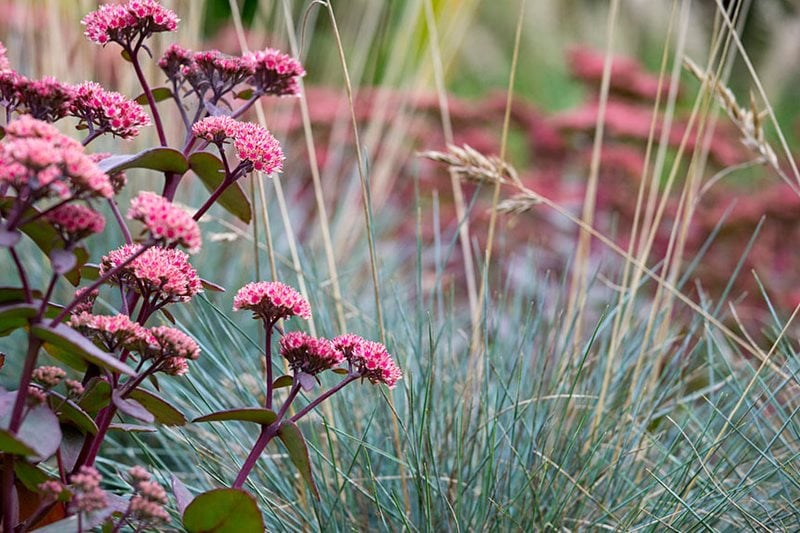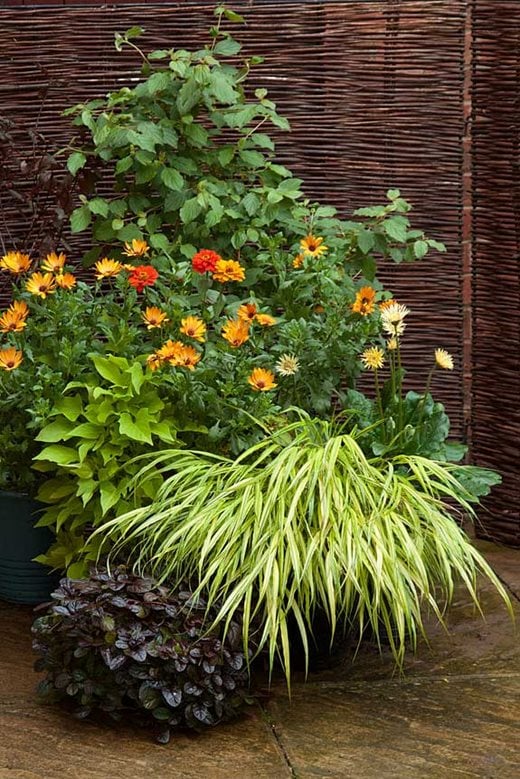Grasses add wonderful contrast and texture to gardens. If you're worried about them spreading, plantsman Graham Rice has some suggestions

Some gardeners are afraid of ornamental grasses. They appreciate their soft beauty, their versatility and their ability to associate well with other plants but they know the nightmare of couch grass, too.
It’s all about the choice, choosing the right varieties, for while it’s true that some grasses can be a menace many are very conveniently compact and well-behaved.
 Potted pleasures
Potted pleasures
Those that remain as tight clumps should top the list for small spaces and I’ve never met anyone dissatisfied with the variegated forms of hakone grass, Hakonechloa macra. The waterfall of white, yellow and green stripes of ‘Aureola’ (see photo) makes a fine container specimen or a focal point in a partly shaded border while 'All Gold' is bright yellow with the slender green leaves of ‘Nicolas’ turning fiery orange in the autumn.
Also remaining in tight clumps, but evergreen, is ‘Tatra Gold’, a yellow-leaved form of our native wavy hair grass, Deschampsia flexuosa. More upright in growth with hair-like foliage, slender purple-bronze plumes emerge in summer becoming richer as autumn approaches. Good in large mixed containers and happy in dryish borders.
In dry and sunny conditions, containers or borders, the blue fescues are ideal and the neat ice-blue foliage of Festuca glauca (see photo, top) looks good against terracotta and in gravel, either as a mini-specimen or in drifts, depending on the scale.
Creepy, but in a good way
It’s true that Japanese blood grass, Imperata cylindrica 'Rubra', creeps – but being native to warmer climates than ours it’s never a problem and spreads just enough that its red-tipped foliage settles around the neater blue-leaved hostas very effectively. It appreciates rich, moist soil.
Perennial quaking grass, Briza media, is also a slow creeper, making a mat of purplish evergreen foliage and a haze of dainty dancing lockets in summer. In ‘Golden Bee’, the lockets are golden yellow rather than biscuit brown. Lovely dried, it’s best in dry, sunny sites and may need reinvigorating by dividing in spring every few years.
In moist shade, the bright yellow striped leaves of Milium effusum 'Yaffle' become greener before dying back in the summer, but neighbouring deadnettles (lamiums) or hostas will soon fill the gaps. It will self-sow into suitable spots and make pretty associations but I’ve never found it a nuisance.
In drier situations don’t let the cumbersome names put you off growing tuber oat grass, Arrhenatherum elatius var. bulbosum 'Variegatum'. Its carpet of silvery white, upright needles will spread slowly but it pays to snip off the flowerheads to improve the look of the foliage.
So, with these well-behaved varieties to choose from we need never be afraid of grasses in small spaces.
*To see which plants are in the photos, tap and hold (on mobile devices) or hover using a mouse.

